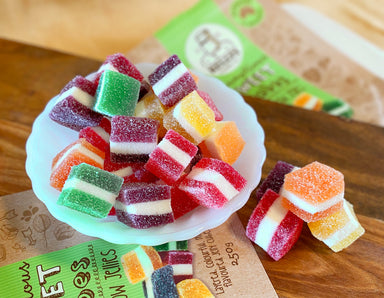Little Known Facts About I Luv Candi.
Little Known Facts About I Luv Candi.
Blog Article
I Luv Candi Fundamentals Explained
Table of ContentsI Luv Candi Fundamentals ExplainedI Luv Candi - TruthsWhat Does I Luv Candi Do?Our I Luv Candi StatementsAn Unbiased View of I Luv Candi
You can likewise approximate your own profits by using various presumptions with our economic strategy for a sweet store. Ordinary monthly profits: $2,000 This sort of sweet-shop is typically a little, family-run organization, possibly known to citizens but not drawing in lots of visitors or passersby. The shop may use a choice of common sweets and a couple of homemade treats.
The store does not commonly lug rare or expensive things, concentrating instead on affordable deals with in order to preserve regular sales. Assuming an ordinary costs of $5 per customer and around 400 consumers each month, the regular monthly revenue for this sweet shop would be approximately. Average regular monthly revenue: $20,000 This sweet-shop gain from its critical place in a busy metropolitan area, bring in a multitude of consumers seeking wonderful extravagances as they shop.
In enhancement to its diverse sweet choice, this store could likewise sell relevant items like gift baskets, candy arrangements, and novelty products, offering numerous profits streams. The store's area needs a higher budget for lease and staffing yet causes greater sales quantity. With an approximated ordinary investing of $10 per customer and concerning 2,000 clients each month, this store can generate.
The Of I Luv Candi
Situated in a significant city and visitor destination, it's a huge facility, typically topped multiple floors and perhaps component of a national or worldwide chain. The shop offers an immense range of sweets, including unique and limited-edition products, and goods like branded clothing and devices. It's not simply a store; it's a destination.
The operational costs for this kind of shop are considerable due to the place, size, staff, and includes used. Thinking an ordinary acquisition of $20 per client and around 2,500 customers per month, this front runner shop might accomplish.
Classification Instances of Costs Typical Monthly Cost (Array in $) Tips to Lower Costs Rental Fee and Utilities Shop lease, electrical energy, water, gas $1,500 - $3,500 Take into consideration a smaller location, negotiate rental fee, and make use of energy-efficient illumination and appliances. Supply Candy, treats, packaging materials $2,000 - $5,000 Optimize supply administration to reduce waste and track preferred items to avoid overstocking.
6 Easy Facts About I Luv Candi Explained
Advertising And Marketing Printed matter, online advertisements, promotions $500 - $1,500 Emphasis on cost-effective digital advertising and marketing and utilize social networks systems completely free promo. Insurance coverage Business obligation insurance policy $100 - $300 Search for affordable insurance coverage prices and take into consideration bundling policies. Devices and Upkeep Cash registers, present racks, repair work $200 - $600 Buy secondhand equipment when feasible and perform routine upkeep to prolong tools lifespan.

This implies that the sweet-shop has gotten to a point where it covers all its fixed expenses and starts generating income, we call it the breakeven point. Think about an instance of a sweet shop where the regular monthly set expenses usually total up to about $10,000. A rough quote for the breakeven factor of a candy shop, would certainly then be around (because it's the complete fixed expense to cover), or offering in between with a price array of $2 to $3.33 per system.
A Biased View of I Luv Candi
A large, well-located sweet-shop would obviously have a greater breakeven point than a tiny store that doesn't need much earnings to cover their costs. Curious concerning the earnings of your candy shop? Try our user-friendly economic plan crafted for sweet stores. Merely input your very own assumptions, and it will certainly assist you compute the amount you require to earn in order to run a profitable organization - carobana.
Another danger is competitors from other sweet-shop or larger sellers who may provide a larger variety of products at lower prices (https://experiment.com/users/iluvcandiau). Seasonal changes popular, like a drop in sales after vacations, can also influence earnings. Additionally, transforming consumer choices for much healthier snacks or nutritional restrictions can minimize the appeal of traditional sweets
Lastly, financial downturns that lower consumer investing can impact candy store sales and productivity, making it important for sweet-shop to handle their costs and adapt website link to transforming market conditions to remain successful. These dangers are typically consisted of in the SWOT analysis for a sweet-shop. Gross margins and net margins are essential indications utilized to gauge the productivity of a candy store company.
See This Report on I Luv Candi
Basically, it's the revenue staying after deducting prices directly pertaining to the sweet stock, such as purchase prices from vendors, manufacturing expenses (if the candies are homemade), and team salaries for those associated with manufacturing or sales. http://dugoutmugs01.unblog.fr/2024/03/28/i-luv-candi-your-sweet-paradise-on-the-sunshine-coast/. Internet margin, alternatively, variables in all the expenditures the sweet store incurs, consisting of indirect expenses like administrative expenses, marketing, rental fee, and tax obligations
Sweet stores normally have an ordinary gross margin.For circumstances, if your sweet shop gains $15,000 per month, your gross profit would certainly be roughly 60% x $15,000 = $9,000. Think about a candy store that marketed 1,000 candy bars, with each bar priced at $2, making the complete income $2,000.
Report this page